IOCCG news bulletins include items of interest from the IOCCG, its sponsoring agencies, and the broader ocean colour community. Please let us know if there are any other items of interest you would like to see included in the next IOCCG news bulletin by contacting Raisha Lovindeer (raisha@ioccg.org).
IOCCG News
IOCS-2023 Meeting
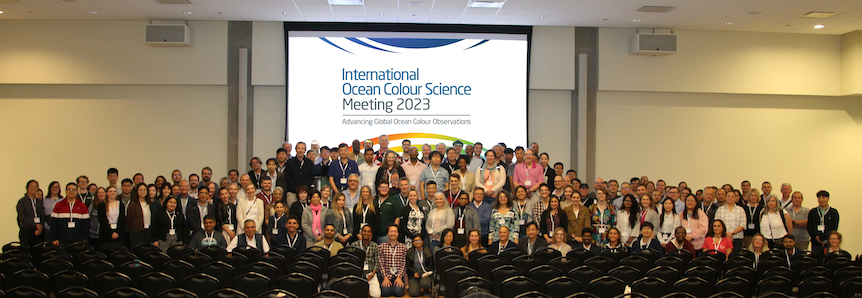 A large contingent of the ocean colour community—over 270 research scientists and agency representatives from around the world—gathered in St. Petersburg Florida, USA for the 6th International Ocean Colour Science (IOCS-2023) Meeting .
A large contingent of the ocean colour community—over 270 research scientists and agency representatives from around the world—gathered in St. Petersburg Florida, USA for the 6th International Ocean Colour Science (IOCS-2023) Meeting .
The IOCS-2023 was held from 14 – 17 November 2023, and was preceded by the GEO AquaWatch Biennial Meeting. It was also the venue for several training courses and associated research team meetings. A wholehearted thanks goes to our host, the University of South Florida (USF) St. Petersburg Campus, and especially the many colleagues and volunteers from the College of Marine Science for an outstanding job in helping to organize and support the event. We also thank the other main meeting sponsors NASA, NOAA and OCB, as well as the sponsoring agencies of the IOCCG, who all made the meeting possible. Thanks to the members of the Organizing and Scientific Planning Committee for their help in structuring the meeting. See note from the IOCCG Chair to all participants.
Dear IOCS-2023 participants,
On behalf of the IOCCG Project Office, all members of the IOCCG Committee, the IOCS Scientific Planning Committee and the IOCS Organising Committee, I write to thank you for all your contributions at the IOCS Meeting at the University of South Florida, St. Petersburg, USA.
According to all the feedback we have received, the IOCS meeting was well received by the community. It was a success only because of all your contributions. I would like to thank all the keynote speakers, the poster contributors, plenary session chairs, breakout session co-chairs, all the space agency representatives, and all those who used this opportunity to have side meetings of working groups and to organise training courses, and of course, everyone of you for your participation in the events.
With best regards,
Shubha Sathyendranath
Chair, IOCCG
The overall goal of the IOCS is to improve communication between research scientists and space agency representatives, and to advance ocean colour radiometry research.
The meeting had six invited keynote talks that covered recent technology, applications, and the economic value of ocean colour. A special opening keynote was delivered by Dr. Howard Gordon, who participated in the development of the Coastal Zone Colour Scanner (CZCS), and delightfully walked the audience through the beginnings of ocean colour remote sensing. Other plenary talks included mission updates and applications from various space agencies and research organizations, and a much appreciated talk by previous chair Cara Wilson on the status of all the recommendations and actions that have emerged from IOCS meetings.
Nine very interactive breakout workshops allowed for groups to form consensus on the way forward on many aspects of ocean colour science. Daily poster sessions allowed many participants to share their research. Each poster session began with lightning talks that were very well received, and allowed the main findings to be communicated quickly to the entire audience ahead of the more detailed discussions with colleagues during the session.
Presentations, photos, and other material from the IOCS-2023 meeting material is now available on the meeting website at iocs.ioccg.org/iocs-2023-meeting. Reports from the breakout workshops are still being collated. Recommendations from all the previous IOCS meetings are also now available on the IOCS website at iocs.ioccg.org/iocs-recommendations, and will be updated with new recommendations that emerged from the 2023 meeting. Recommendations aimed at the ocean colour community will be communicated in future news bulletins.
IOCCG Platt Scholarship – Stories from the Scholars: David González Rivas
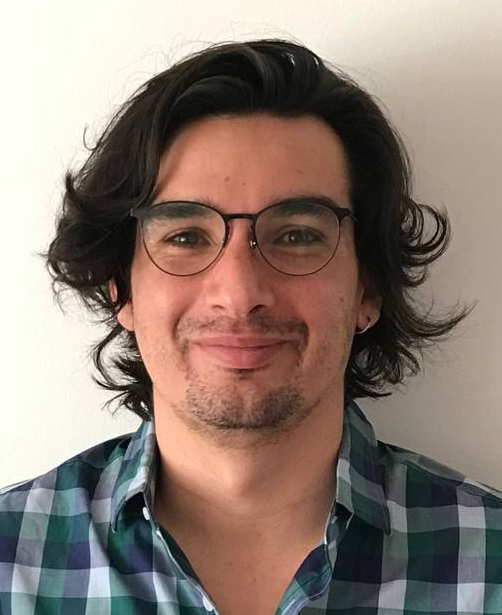 The opportunity to conduct a two-month research visit in Dr. Dierssen’s Lab, Coastal Ocean Laboratory for Optics and Remote Sensing (COLORS), was a profoundly enriching experience. I met and collaborated with fellow students and alumni engaged in diverse lab projects, fostering connections with colleagues exhibiting varied interests and backgrounds. From the very beginning, I felt welcomed into Dr. Dierssen’s team. I was invited to participate in their sampling sessions and received comprehensive training on utilizing the Field Spec Pro ASD as an integral member of the laboratory. This experience was not limited to UCONN and nearby field sampling, as Dr. Dierssen also invited me to conferences near Boston and a field project in Ottawa, Canada. These experiences allowed me to learn about new applications and uses of hyperspectral sensors and their utilizations.
The opportunity to conduct a two-month research visit in Dr. Dierssen’s Lab, Coastal Ocean Laboratory for Optics and Remote Sensing (COLORS), was a profoundly enriching experience. I met and collaborated with fellow students and alumni engaged in diverse lab projects, fostering connections with colleagues exhibiting varied interests and backgrounds. From the very beginning, I felt welcomed into Dr. Dierssen’s team. I was invited to participate in their sampling sessions and received comprehensive training on utilizing the Field Spec Pro ASD as an integral member of the laboratory. This experience was not limited to UCONN and nearby field sampling, as Dr. Dierssen also invited me to conferences near Boston and a field project in Ottawa, Canada. These experiences allowed me to learn about new applications and uses of hyperspectral sensors and their utilizations.
One notable aspect of this research stay was, of course, the ongoing development of the scholarship project. I received valuable feedback throughout this period, contributing to the refinement of our work. Also, having the opportunity to attend and participate in the IOCS-2023 meeting proved to be an exceptional experience. This provided the chance to reconnect with colleagues from Lab COLORS and facilitated meeting other professionals. Interacting with attendees during poster sessions and informal gatherings while also attending various conferences offered invaluable insights and networking opportunities. This type of experience provides me with great confidence, stimulates me to continue learning, and, above all, generates a cultural and academic exchange that hopefully will continue to grow. I am very grateful to the entire Ocean color community and the IOCCG for the opportunity to work with the lab members and former members, and to COLORS, and especially to Dr. Dierssen, for the warmth and all the support shown since the first day we started talking.
David’s research in the COLORS lab focused on using ocean color data to understand shrimp farms water discharge in the coastal ecosystems of the Gulf of California. The final report of his scholarship work is being finalized and will be available on the IOCCG Platt Scholars webpage.
Applications for the 2024 Platt Scholarship closed on 12 January 2024 and selections are underway. The 2024 Scholar will be notified and announced in early March 2024.
Applications OPEN for the 2024 IOCCG Summer Lecture Series
 Applications are now open for the 2024 IOCCG Summer Lecture Series. The course is scheduled to take place from 4 – 16 November 2024 in Hyderabad, India, hosted by the International Training Centre for Operational Oceanography (ITCOOcean) at the Indian National Centre for Ocean Information Services (INCOIS).
Applications are now open for the 2024 IOCCG Summer Lecture Series. The course is scheduled to take place from 4 – 16 November 2024 in Hyderabad, India, hosted by the International Training Centre for Operational Oceanography (ITCOOcean) at the Indian National Centre for Ocean Information Services (INCOIS).
Previously, the course was held in Villefranche-sur-Mer, France, at the Laboratoire d’Océanographie de Villefranche, Institut de la Mer, de Villefranche, which is gratefully acknowledged. As in previous years, this high-level training course is dedicated to the fundamentals of ocean optics, bio-optics and ocean colour remote sensing.
Further details about the course, as well as the application form, can be found on the Summer Lecture Series page on the IOCCG website: ioccg.org/what-we-do/training-and-education/ioccg-sls.
The deadline for applications is 29 February 2024.
IOCCG Protocol Series highlighted in EOS
An article highlighting the newest edition of the IOCCG Protocol Series The Ocean Optics and Biogeochemistry Protocols for Satellite Ocean Colour Sensor Validation Volume 7.0—Aquatic Primary Productivity Field Protocols for Satellite Validation and Model Synthesis was published in the science news magazine EOS, managed by the American Geophysical Union. Carbon In, Carbon Out: Balancing the Ocean’s Books is a plain-language description of the challenges of measuring primary production in the ocean, and of creating collaborative methods to reduce uncertainties. The article also includes a link to visual and aural changes in ocean chlorophyll levels made from spectral ocean reflectance data. Click the link to read and listen!
IOCCG Website Update – Ocean Colour Training & Educational Resources
Want a one-stop guide to introductory and advanced courses in ocean colour science and applications? The IOCCG training and educational resources webpage on the IOCCG website has links to a slew of course material including massive open online courses, recorded live training sessions, lecture material from past IOCCG Summer Lecture Series and The (Maine) Ocean Optics Classes, self-directed learning modules, Youtube videos, practicals, and even resources for teachers. Check out the updated webpage here or select Resources > Tutorials/Books in the navigation bar on the IOCCG website.
If you have relevant and accessible course material (introductory, intermediate, or advanced) that you would like included on the webpage, please contact Raisha Lovindeer (raisha@ioccg.org).
News from NASA
PACE Mission Launch Scheduled for February 2024
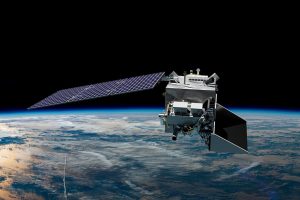 The Plankton, Aerosol, Cloud ocean Ecosystem (PACE) mission is set to launch on Tuesday, 6 February! The launch will take place from the Space Launch Complex 40 at Cape Canaveral Space Force Station in Florida, USA.
The Plankton, Aerosol, Cloud ocean Ecosystem (PACE) mission is set to launch on Tuesday, 6 February! The launch will take place from the Space Launch Complex 40 at Cape Canaveral Space Force Station in Florida, USA.
The fundamental science goals of the PACE mission are to extend key systematic ocean color, aerosol, and cloud data records for Earth system and climate studies, and to address new and emerging science questions using its advanced instruments, surpassing the capabilities of previous and current missions. PACE’s primary sensor is the Ocean Color Instrument (OCI), which will enable continuous measurement of light at finer scale spectral resolution from the ultraviolet (340 nm) to near-infrared (895 nm) with 5 nm bandwidth resolution.
Register here to participate in the launch online. Registration also provides communications about launch schedule changes and other mission resources.
News from SOA
China launched new generation ocean color satellite
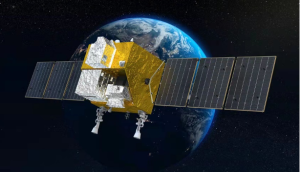 The first new generation ocean color satellite of China (previously called HY-1E) was successfully launched on 16 November 2023. Three major payloads are carried by the satellite. The first is China’s second-generation ocean color and temperature scanner (COCTS2) with 18 spectral bands from 360 nm to 12 µm, a spatial resolution of 500 meters, and a swath width of >3000 kilometers. The second is the programmable medium resolution imaging spectrometer (PMRIS) with multispectral and hyperspectral observation modes. The multispectral mode has 19 spectral bands from 385 nm to 2.135 µm, and a resolution of 100 meters, while the hyperspectral mode has 90 spectral bands from 375 nm to 920 nm, 4 bands at short-wave infrared spectrum, and a resolution of 200 meters. The third is the second-generation coastal zone imager (CZI2) with a spatial resolution of 20 meters (8-band multispectral) and 5 meters (panchromatic band), a swath width of 60 kilometers, and the capability of pendulum observation within a range of 1000 kilometers. Currently, the satellite is undergoing in-orbit testing and is expected to release its preliminary products in February 2024.
The first new generation ocean color satellite of China (previously called HY-1E) was successfully launched on 16 November 2023. Three major payloads are carried by the satellite. The first is China’s second-generation ocean color and temperature scanner (COCTS2) with 18 spectral bands from 360 nm to 12 µm, a spatial resolution of 500 meters, and a swath width of >3000 kilometers. The second is the programmable medium resolution imaging spectrometer (PMRIS) with multispectral and hyperspectral observation modes. The multispectral mode has 19 spectral bands from 385 nm to 2.135 µm, and a resolution of 100 meters, while the hyperspectral mode has 90 spectral bands from 375 nm to 920 nm, 4 bands at short-wave infrared spectrum, and a resolution of 200 meters. The third is the second-generation coastal zone imager (CZI2) with a spatial resolution of 20 meters (8-band multispectral) and 5 meters (panchromatic band), a swath width of 60 kilometers, and the capability of pendulum observation within a range of 1000 kilometers. Currently, the satellite is undergoing in-orbit testing and is expected to release its preliminary products in February 2024.
News from ESA & EUMETSAT
Sentinel-3 OLCI products and the TSIS-1 solar irradiance reference spectrum
Sentinel-3 OLCI Level-1 top-of-the-atmosphere radiance products will be moving to the Total and Spectral Solar Irradiance Sensor-1 (TSIS-1) solar irradiance reference spectrum.
The difference between the current Thuillier et al., 2003, solar spectrum and TSIS-1 is significant for OLCI L1 radiances and exceeds 3% for bands at 400, 412 and 560 nm. Operational switch to the TSIS-1 solar spectrum will occur in the first half of 2024. At the same time, OLCI-A and -B full mission datastream reprocessed with the new spectrum will become available.
The community will be further informed about the operational switch and provided with supporting documentation.
Sentinel-3 Validation Team meeting presentations
Successful S3VT meeting took place 5-7 December 2023 under EUMETSAT and ESA auspices. All presentations from the meeting are available on the S3VT#8 website, under the menu Programme.
A summary of findings and recommendations from the Ocean Colour sessions is also available from the last day’s Wrap-up Session.
News from EUMETSAT
Copernicus 2024 training
Thirty applicants have been selected to join the Copernicus 2024 training on In situ Above-Water Radiometric Measurements. Congratulations to all!
This selection was performed over a total of 96 excellent applications, particularly reaching students and early career scientists. The trainees come from EU Copernicus countries as well as from the Americas, Asia, and non-Copernicus Europe.
Copernicus 2024 training is designed as a comprehensive training event on Ocean Colour in situ above-water radiometric measurements in the frame of the Copernicus-funded FRM4SOC-2 project. The training will take place from 6-17 May 2024, at Italian ISMAR (Istituto delle Scienze Marine) in Venice and on the near-by Acqua Alta Oceanographic Tower (AAOT: 45.3142467 N; 12.5082483 E). The event will allow participants to learn and discuss with top experts in in situ radiometry in a classroom setting and at the AAOT while taking the measurements. The lessons will delve into the complexity of the physical processes that occur inside field radiometers, evaluate the impact of several uncertainty sources in the radiometers, measurements and satellite product validations, discuss best-practice field measurement protocols and procedures, learn to use the HyperCP community processor and analyse the data.
Upcoming Events
Abstracts due for the 45th COSPAR Scientific Assembly
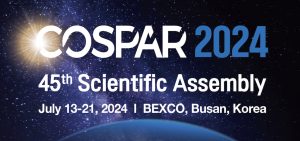 The 45th Committee on Space Research (COSPAR) Scientific Assembly will be held in Busan, South Korea from 13 – 21 July 2024. The assembly brings together all aspects of space research, with many themes and sessions.
The 45th Committee on Space Research (COSPAR) Scientific Assembly will be held in Busan, South Korea from 13 – 21 July 2024. The assembly brings together all aspects of space research, with many themes and sessions.
Abstracts under the following session are welcome A2.1: Science and Applications Enabled by Satellite Missions for Global Ocean, Inland Seas, and Cryosphere. This aims to promote the values of satellite missions for the global ocean, inland seas, and cryosphere, and to foster international collaborations and coordination. The scope includes scientific and operational exploitation of satellite measurements from past, current and future missions, and retrieval improvements, including calibration and validation. Of particular interest are studies in estuaries, and coastal and polar oceans, where special retrieval algorithms are required to improve accuracy of geophysical products, as well as contributions of holistic satellite measurements to study climate change. Also encouraged is the use of satellite measurements in synergy, as well as their use within models, and combined with in situ data. This includes demonstrations of machine learning techniques that impact ocean science and applications. Finally, contributions to advance the science of future mission concepts, sensor technologies, and instrument data processing algorithms, are welcome.
The deadline to submit an abstract is 9 February 2024.
Ocean Sciences Meeting 2024
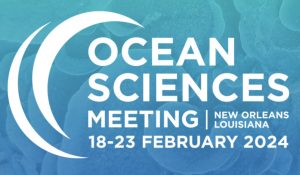 The 2024 Ocean Sciences Meeting will take place at the Ernest N. Morial Convention Center in New Orleans, Louisiana, USA and online from 18-23 February 2024. The meeting is co-sponsored by the American Geophysical Union (AGU), the Association for the Sciences of Limnology and Oceanography (ASLO), and The Oceanography Society (TOS), and is an Endorsed Decade Action program with the United Nations Decade of Ocean Science for Sustainable Development.
The 2024 Ocean Sciences Meeting will take place at the Ernest N. Morial Convention Center in New Orleans, Louisiana, USA and online from 18-23 February 2024. The meeting is co-sponsored by the American Geophysical Union (AGU), the Association for the Sciences of Limnology and Oceanography (ASLO), and The Oceanography Society (TOS), and is an Endorsed Decade Action program with the United Nations Decade of Ocean Science for Sustainable Development.
The schedule for the meeting is now available and there are several workshops, town halls, and oral and poster presentations related to ocean colour remote sensing. Some relevant workshops and town halls include:
Workshop: NOAA CoastWatch Scientific Workshop On Ocean Satellite Data Products And ERDDAP, Sunday, 18 February
Town Hall: TH13H – NASA Ocean Programs, Monday, 19 February
Town Hall: TH23E – GeoXO Ocean Color Instrument (OCX): A Paradigm Shift for Ocean Color, Tuesday, 20 February
Town Hall: TH33L – Satellite Ocean Observing Needs for the Coming Decade: An Active and Passive Future, Wednesday, 21 February
Town Hall: TH43I – Joint Town Hall for the NASA Hyperspectral Missions PACE, GLIMR, and SBG, Thursday, 22 February
Town Hall: TH53B – Building a Community of Practice for the Collection and Assessment of Operational Phytoplankton Observations, Friday, 23 February
Employment Opportunities
Several new research and employment positions have been added to the Employment Opportunities section on the IOCCG website. These include:
- Junior Research Group Leader Optical Remote Sensing, Rostock, Germany
- Postdoctoral Research Associate in Aquatic Remote Sensing, Center for Discovery and Innovation, NY, USA
- NASA Mission Project Applications Coordinator, Greenbelt, MD, USA
- PhD Fellowship Monitoring Ocean Color using Air- and Space-borne Lidar, LOG, France
- Post-Doc in Satellite Water Quality Modeling and Forecasting, EPA, NC, USA
- Postdoctoral Researcher in Biogeochemistry, University of Oxford, UK
If you would like to include a position on this page, please contact Raisha Lovindeer.


 The sixth International Ocean Colour Science (IOCS) meeting will take place in Darmstadt, Germany from 1 – 4 December 2025, hosted by EUMETSAT and ESA with support from other agencies.
The sixth International Ocean Colour Science (IOCS) meeting will take place in Darmstadt, Germany from 1 – 4 December 2025, hosted by EUMETSAT and ESA with support from other agencies.